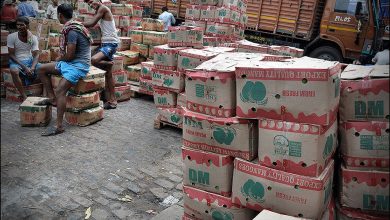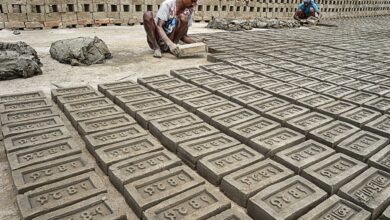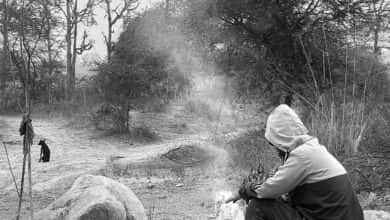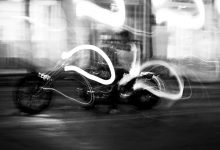
A Biography of Scrap, photo essay by Saumya Khandelwal
A truck perched on a terrace, a Maruti 800 sitting on top of a Tata Sumo; terrace after terrace covered with vehicle doors and bonnets, roads and invisible pavements encroached with greasy machine parts, and a public park devoid of grass or people and occupied with machines and scrap instead. The constant murmur of machines never stops. The hammering of a vehicle to be dismantled, the movement of metal tyres on stone laden passages, the groaning of the JCB which moves around the engines, and the clunk of the parts when they are thrown at each other one after the other. These are the sensual identifications of a vehicular scrap market.
Mayapuri junk market is India’s largest. Vehicles brought in retail or from auctions travel to Mayapuri to be dismantled in its muddy lanes. A truck can be dismantled in an hour and a half and a car will take lesser. The parts to be re-sold are extracted and are moved to second hand shops and the remaining is left for the metal scrap dealers. They collect the metal from the remains. The seats, rubber and plastics are gathered by yet smaller scrap dealers. And the last bit of scavenging is done by women and children who use magnets to gather the little metal that falls down on the roads and burn the plastic and wires that are collected at the market for their metal contents.




The scrap is then pressed into bales which travel to other parts of the country like Punjab, Uttar Pradesh, Himachal and Haryana for further processing in furnaces. Furnaces melt the scrap at temperatures around 1650 degrees Celsius and convert them into pig iron. Pig iron then can take any shape. The cycle has now been completed. A truck or a vehicle is now recycled and has acquired a new form.
India recycles 20-25% of its metal waste which is way too insufficient for its requirements. An unorganized industry, it runs in the hands of private players with little intervention or help from the government.
In pursuing this project, undertaken as part of Neel Dongre Photography Grant 2015, I have spent days in Mayapuri to understand and document the processes and the market. The documentation became complete at a furnace in Baddi, Himachal Pradesh where the scrap was processed into pig iron. (Saumya Khandelwal)





Q&A with Saumya Khandelwal
Photography is…
Photography at large is a reflection of the times through the medium of images. For the photographer, it is a personal experience of engaging with life. To me it acquires the form of seeing life differently, an experience I would have been deprived of if I wasn’t making photos.
Photography and writing…
Photography and Writing are two different mediums of expression which a lot of times compliment each other. Like all forms of art, both can be opinionated, thoughtful, poetic and can exude a certain style. I myself like to explore their inter-dependence if my projects require me to.
Who left the biggest impression on you?
My photography and the thought process behind it is affected by works of many photographers. When I was in college I looked at the works of a lot of Magnum photographers and tried to absorb from it. Alex Webb was a personal favourite. Soon after college I met my mentor, Amit Mehra, whose style and ideas continue to influence me immensely. He exposed me to the nuances of the medium. I was also introduced to the works of Raghubir Singh, Yuri Kozyrev, Francesco Zizola and Nadav Kander whom I deeply appreciate.
Is there anything else you’d like to share with the readers?
I feel grateful to platforms like Private Magazine which promote the works of photographers and give us a way to reach our audience.









